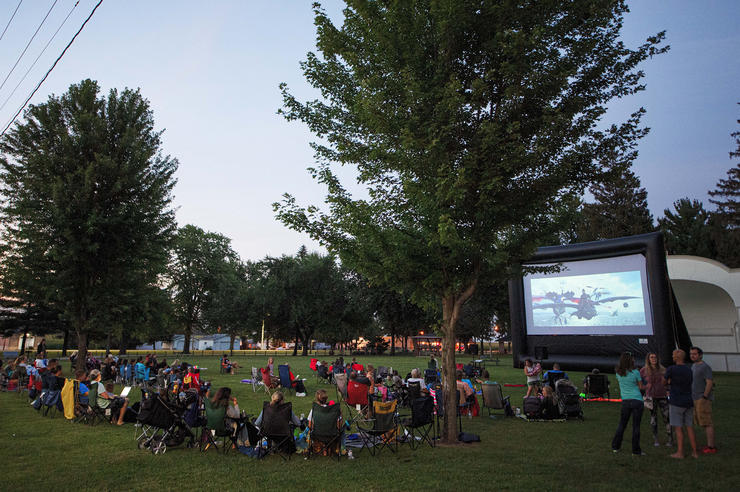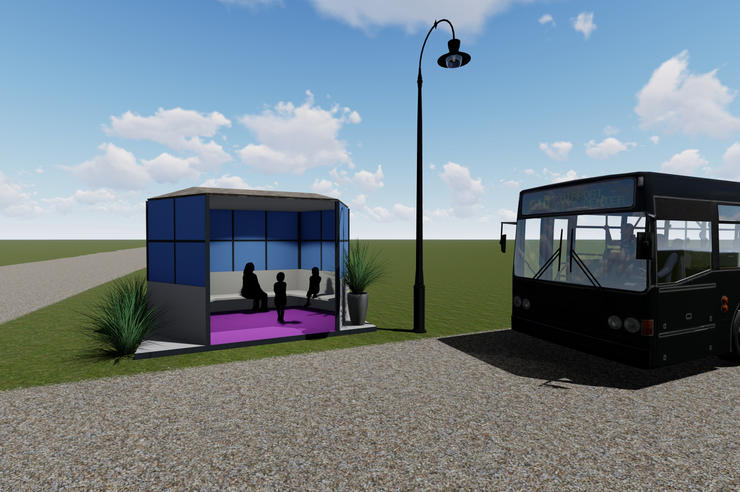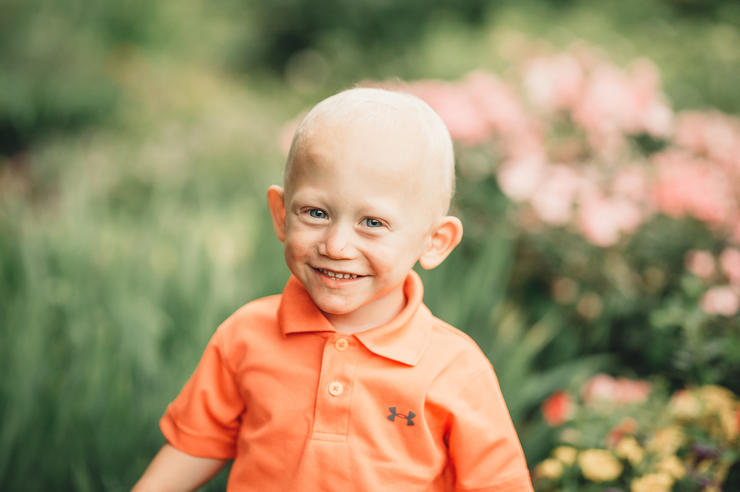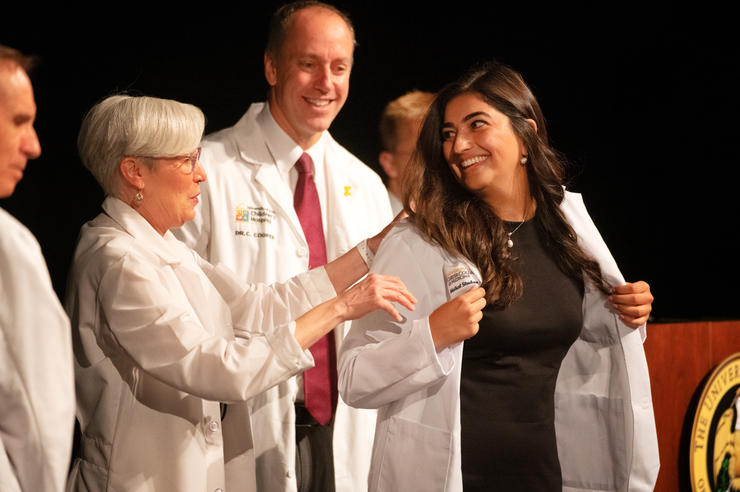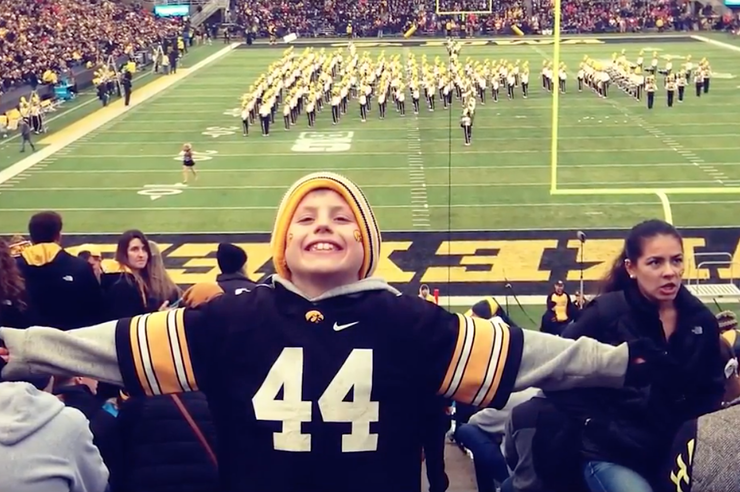Iowa experience opens doors to the Smithsonian
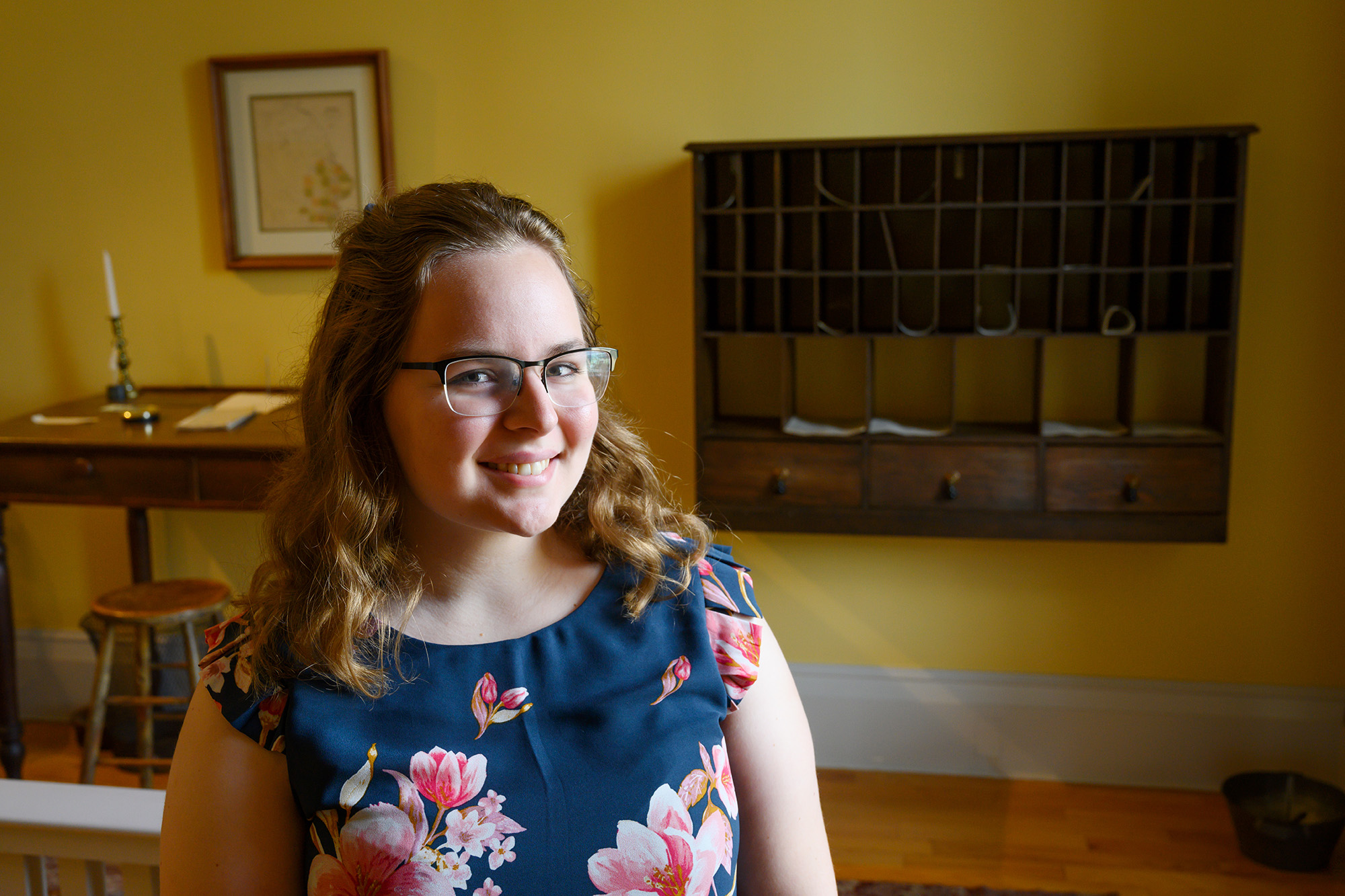
Along with a telephone used by Alexander Graham Bell; a 1960 Greensboro, Alabama, lunch counter; Dorothy’s ruby slippers; and Muhammad Ali’s boxing gloves, visitors to the Smithsonian’s National Museum of American History in Washington, D.C., last spring also may have seen a Hawkeye.
University of Iowa senior Emily Lefeber spent the spring 2019 semester as a daily programming intern at the famed museum. In her role, she introduced artifacts of the past to visitors from around the world—explaining how people used them and how they helped shape our world today. Lefeber also helped design new programming for the museum.
The Harlan, Iowa, native is double-majoring in history and political science, as well as earning her museum studies certificate.
“I started out thinking I wanted to be a history teacher,” Lefeber says. “I quickly decided that wasn’t for me, and my freshman-year adviser pointed me in the direction of museum studies, which has been a really good fit.”
Lefeber says she applied for multiple internships within the Smithsonian system. She interviewed in early November 2018 and found out later that month she would be moving to D.C. in January.
Lefeber wasn’t new to working in museums. She had worked as a docent at University of Iowa Pentacrest Museums and at the Shelby County Historical Museum in her hometown. But there was still a lot to learn.
“There was a ton of reading and training before we went out on the floor,” Lefeber says. “They did a good job of making sure we were comfortable with what we were doing.”
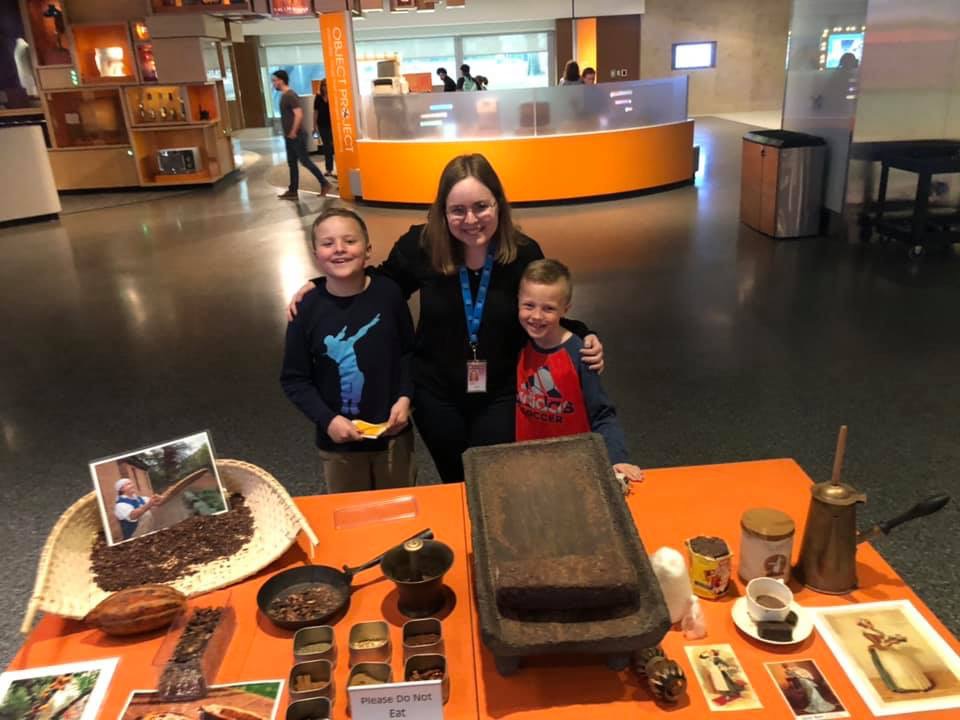
Emily Lefeber with her cousins Sean and Will McGrath at a Smithsonian program she led called The Business of Chocolate: From Bean to Drink.
The first program she worked on was an agriculture history program called Harvest for the Table: Wheat to Flour, in which visitors could grind their own wheat. She also led The Business of Chocolate: From Bean to Drink and worked on the Object Project, a learning space that explores how everyday things such as refrigerators, bicycles, and ready-to-wear clothing shaped life as we know it.
“I was there to interpret things and tell visitors more, but these programs are really discussion-based instead of lecture-based,” Lefeber says. “They are sort of led by the visitors, which is really cool.”
Lefeber also worked with an actress to facilitate a show titled Justice Must be Done, in which visitors could meet social reformer Lucy Caldwell in her Ipswich, Massachusetts, home—the largest item in the museum’s collection—and attend an 1840 meeting of the Ipswich Female Anti-Slavery Society.
Each intern was required to complete a personal project, and for hers, Lefeber designed a program based on See Me at SAAM, a program at the Smithsonian American Art Museum for individuals with dementia and their caregivers.
“We were the first history museum to do it, so it was experimental,” Lefeber says. “The goal of this program is inclusion and discussion. Rather than talking specifically about, for example, voting laws and how people fought for the right to vote, we’d talk about a voting machine from the past and ask participants if they could imagine themselves using this machine—things that didn’t require a lot of memory skills.”
“Emily always seems to be endlessly patient, which is a skill you need when dealing with the general public and with little kids at a program. She’s also a planner, able to look down the road to realize that she may want to plan ahead so when things get busier, she’s not as overwhelmed with a big to-do list. She’s kind and hardworking. You can’t ask for a better combo.”
Lefeber says they got a lot of great feedback about the program, and the Smithsonian plans to host it again in the future.
The internship helped cement Lefeber’s interest in her chosen field.
“I absolutely want to continue on this path,” Lefeber says. “It was a great experience, and I loved all of it. It was hectic and crazy, but such a fun place to work. I’d love to get a job there someday. I definitely want to continue working in public programming for nonprofits and museums.”
Through preservation, education, and research museums provide space for communities to share ideas about their past, present, and future. The University of Iowa maintains a long tradition of training and preparing professionals for the interdisciplinary work that takes place in museums, offering courses continuously since 1911.
Julia DeSpain, director of education and engagement at Pentacrest Museums, says Lefeber is well-suited to this type of work.
“Emily always seems to be endlessly patient, which is a skill you need when dealing with the general public and with little kids at a program,” DeSpain says. “She’s also a planner, able to look down the road to realize that she may want to plan ahead so when things get busier, she’s not as overwhelmed with a big to-do list. She’s kind and hardworking. You can’t ask for a better combo.”
After completing the semester-long internship, Lefeber served as a programming assistant at the Shelby County Historical Museum, where she has worked during school breaks since 2016.
Lefeber says she looks forward to her final year at Iowa. Along with continuing to work at Pentacrest Museums—where, as an education assistant, she’ll create Night at the Museum programming for first- through fifth-graders—she’ll be finishing her honors thesis on women’s suffrage.
Internships such as Lefeber’s at the Smithsonian give students a leg up when it comes time to look for a job after graduation.
“The museum world is a competitive field to work in,” DeSpain says. “For most museums, funding is tight and staff sizes are small. Even big cities just have a handful of museums, so there are just a handful of jobs that might open up in a given year. When they do, there’s usually a lot of competition for the open position. It makes it hard to get a job in the museum field, especially one that is full time. Any experience a student can get before graduation puts them a little bit ahead coming out of the gate.”
Lefeber urges other students to seek out their dream internships.
“Don’t shy away from applying because you think there’s little chance of being selected,” Lefeber says. “The odds are better than you think. Aim high. It’s worth it.”
